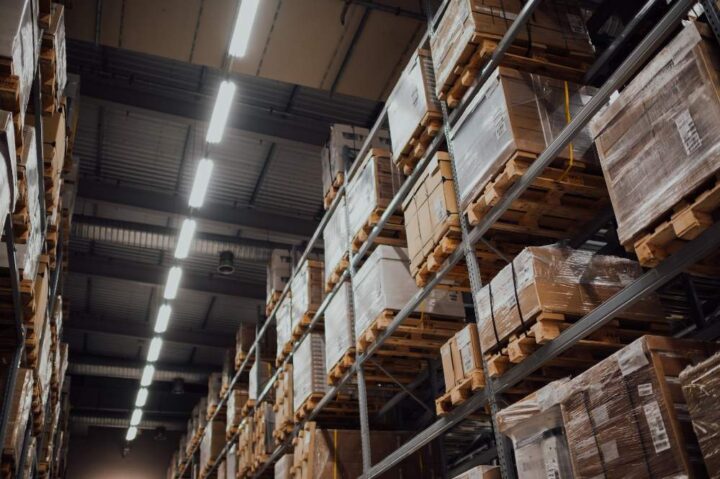Storage Revolution: How to Transform Your Warehouse Capacity
In the age of increasing consumer demands and e-commerce boom, optimizing warehouse capacity has become a crucial undertaking for businesses. This guide aims to provide insightful strategies and innovative solutions to help you maximize your storage space.
We’ll delve into the nitty-gritty of warehouse management, explore the latest technology advancements, and shed light on how to effectively utilize every square foot of your facility. Whether you’re a seasoned warehouse manager or just starting, this guide will equip you with the tools to transform your storage capacity.

Consider Mezzanine Solutions
Mezzanine solutions have gained popularity in recent years as a cost-effective way to increase warehouse storage capacity. These elevated platforms can be installed above existing workspaces or aisles, effectively creating additional levels within the facility. Mezzanines are customizable and can be tailored to fit any space or requirement, making them suitable for various industries.
One of the main advantages of mezzanines is that they do not require any structural changes to the building, unlike traditional expansion methods. They also offer quick installation times and can be easily relocated or expanded as needed. You can read more about this online. Mezzanines are ideal for storing lighter items such as cartons, boxes, and small parts, making them a viable option for businesses dealing with e-commerce orders.
Utilize Vertical Space
Vertical space is often overlooked in warehouse management. However, with the right approach, it can significantly increase storage capacity and improve efficiency. Vertical storage solutions involve utilizing high ceilings by installing tall racks or shelving units. These systems can reach up to 40 feet in height, providing ample space for storing goods.
To effectively utilize vertical space and get the best results from your Stackable Racks, you need to consider the weight and dimensions of your inventory, as well as accessibility and safety. Automated storage and retrieval systems (AS/RS) are an innovative solution that can maximize vertical space utilization while increasing efficiency and accuracy. These robotic systems can move items in and out of racks with precision, reducing the risk of damage and optimizing storage density.
Invest in Warehouse Management Software
Effective warehouse management requires proper organization, tracking, and inventory control. Investing in warehouse management software (WMS) can help streamline operations and reduce errors by automating various tasks such as order fulfillment, inventory management, and shipment tracking.
WMS also provides real-time data that can help you make informed decisions about your warehouse capacity. With features like demand forecasting and space utilization reports, WMS can assist you in identifying areas for improvement and optimizing your storage space. Additionally, WMS can integrate with other systems such as barcode scanners and automated material handling equipment, further enhancing efficiency and accuracy.
Take Advantage of Warehouse Layout Optimization
Optimizing the layout of your warehouse is crucial to maximizing storage capacity. It involves strategically placing racks, shelves, and other storage solutions to minimize travel time and maximize space utilization. A well-designed warehouse layout can lead to significant cost savings and increased productivity.
There are various factors to consider when optimizing your warehouse layout, such as product demand, inventory flow, and order-picking methods. Advanced technology such as computer-aided design (CAD) can help create 3D models of your facility and simulate different layout scenarios for optimal results.
Consider Outsourcing Fulfillment Services
Outsourcing fulfillment services can be a game-changer for businesses looking to optimize their storage capacity. By partnering with third-party logistics (3PL) providers, you can take advantage of their expertise and infrastructure to store and manage your inventory. This option is particularly beneficial for businesses dealing with seasonal fluctuations in demand or limited warehouse space.
Outsourcing fulfillment services also offers cost savings, as you only pay for the space and services you need. Additionally, 3PL providers often have multiple warehouse locations, providing flexibility and strategic placement of inventory to reduce shipping costs.
Explore New Technologies
Technology continues to revolutionize warehouse management, offering solutions that were previously unimaginable. For example, robotic picking systems are becoming increasingly popular due to their speed and accuracy in fulfilling orders. Drones are also being utilized for inventory management, reducing the need for manual counting.
Smart storage solutions such as automated vertical carousels and cube storage systems can significantly increase storage density while saving space. Additionally, cloud-based inventory management software allows for real-time data access, improving inventory control and demand forecasting.
In conclusion, optimizing warehouse capacity requires a multi-faceted approach that includes utilizing innovative solutions, investing in technology, and strategic planning. By taking advantage of mezzanine solutions, vertical space utilization, warehouse management software, layout optimization, outsourcing fulfillment services, and new technologies, businesses can transform their storage capacity and meet the demands of today’s fast-paced market. So don’t wait any longer, start implementing these strategies today and revolutionize your warehouse capacity!


